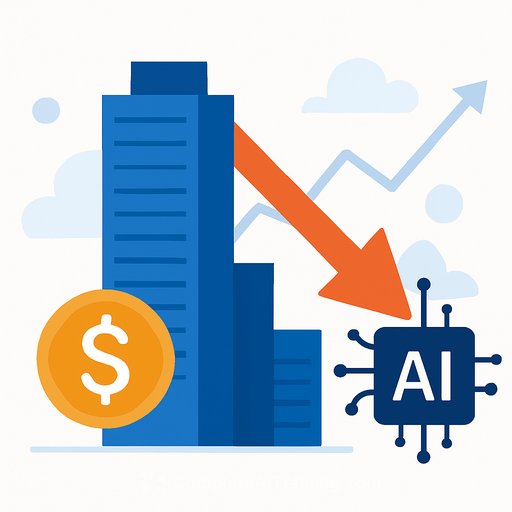Insurance and AI: A Double-Edged Sword
AI is changing how insurers price risk, settle claims, and run operations. The upside is speed, scale, and sharper decision-making. The downside is new loss vectors, model risk, and fraud that looks real enough to pass first-line checks. The firms that treat AI as an operating system, not a novelty, will build better portfolios faster.
How We Got Here
Insurance has always been a data business. The industry adopted big tech earlier than its reputation suggests-think IBM System/360 automating accounting and reporting in the 1960s. Underwriting took longer to digitize; pushpins on wall maps were once standard practice to track accumulations. The science side won the "art vs. science" debate by sheer results.
Six Phases of Pricing Sophistication
- Phase 1: One price for everyone. Airport kiosks sold flat-fee AD&D policies. Simple. Also easy to exploit, as 1950s fraud cases showed.
- Phase 2: Risk classes. Basic credits and debits for construction type, alarms, distance to fire stations, pools, trampolines, or aggressive pets.
- Phase 3: Rating bureaus. Smaller carriers pooled data via ISO, AAIS, and NCCI to set more accurate rates. As proprietary data grew, reliance on bureaus shrank.
- Phase 4: Segmentation. More granular tables and micro-segments. Auto lines led the way by rating hundreds of car/driver combinations.
- Phase 5: Big data and predictive analytics. Social signals, telematics, and third-party data sharpened loss prediction.
- Phase 6: AI (in progress). What took hours-submissions triage, pricing support, fraud flags-now takes seconds. This isn't incremental. It resets workflows.
Where Carriers Are Applying AI Today
- Underwriting and pricing: Submission ingestion, document summarization, risk classification, peril scoring, and appetite matching.
- Claims: First notice automation, image-based severity estimates, fraud triage, subrogation identification, and payment optimization.
- Operations: Customer service bots, agent assist, knowledge retrieval, and policy drafting support.
- Risk engineering: Computer vision on imagery for roof condition, fire hazards, and site compliance.
- Compliance and audit: Model monitoring, documentation generation, and pattern deviation alerts.
The Sharp Edge: Real Risks Emerging
Some carriers are already tightening coverage. One large insurer has moved to exclude certain AI-related exposures in D&O, framing them as governance and duty-of-care risks. Another carrier insuring major industrial facilities has flagged AI-enabled cyberattacks that could degrade critical infrastructure. Others warn of malicious use-automated scripts, content generation, and synthetic data that scale bad intent.
Claims fraud is the near-term headache. Adjusters are seeing AI-altered photos, fabricated invoices, and synthetic identities slip past basic checks. A UK survey commissioned by a claims automation firm reported most adjusters believe a noticeable share of claims include AI-manipulated elements. Expect that trend to spread.
What To Do Now: Practical Moves for Insurance Leaders
- Set guardrails: Adopt an AI risk framework, with clear ownership, documentation, and review cycles. The NIST AI RMF is a solid starting point.
- Keep humans in the loop: Use AI for triage and recommendations; require final human decisions for pricing, declinations, and large claims.
- Harden claims intake: Add image forensics, metadata checks, duplicate detection, and vendor verification. Train SIU on generative media tells.
- Tighten policy language: Clarify AI-related perils and responsibilities in D&O, cyber, and tech E&O. Align underwriting questions with model risk and data governance.
- Measure impact: Track loss ratio deltas by AI-augmented segment, fraud hit rates, leakage, cycle time, and complaint ratios. Kill what doesn't move metrics.
- Vendor diligence: Validate training data provenance, bias testing, explainability, and monitoring. Push for right-to-audit where material.
- Upskill your teams: Underwriters, claims leaders, and actuaries need prompt and workflow skills, not just model theory. For role-based options, see AI courses by job.
Field Notes by Line of Business
- Personal auto/home: Telematics and computer vision reduce noise in severity and subrogation. Watch for fairness drift in pricing models.
- Commercial property: Satellite and aerial imagery improve valuation and CAT exposure checks. Validate third-party imagery sources and timestamps.
- Cyber: Use AI to score controls (MFA, EDR, backups) and monitor threat intel, but be explicit on war, systemic events, and AI-enabled attack scenarios.
- D&O: Scrutinize AI governance, board oversight, and disclosures. Model litigation frequency for AI incidents and misstatements.
- Workers' comp: Triage and nurse case management benefit from AI, but preserve clinical review and bias testing on return-to-work recommendations.
The Competitive Reality
AI's benefits are real and compounding. Early adopters will write better risks, spot fraud sooner, and run leaner operations. Fast followers can still win with tight execution and measurement. Laggards will feel it in combined ratios first, then in market share.
The takeaway is simple: move with intent. Start with one or two high-ROI use cases, set guardrails, and wire results into underwriting and claims decisions. The "AI race" in insurance isn't hype-it's an efficiency contest with loss ratio as the scoreboard.
Your membership also unlocks:






